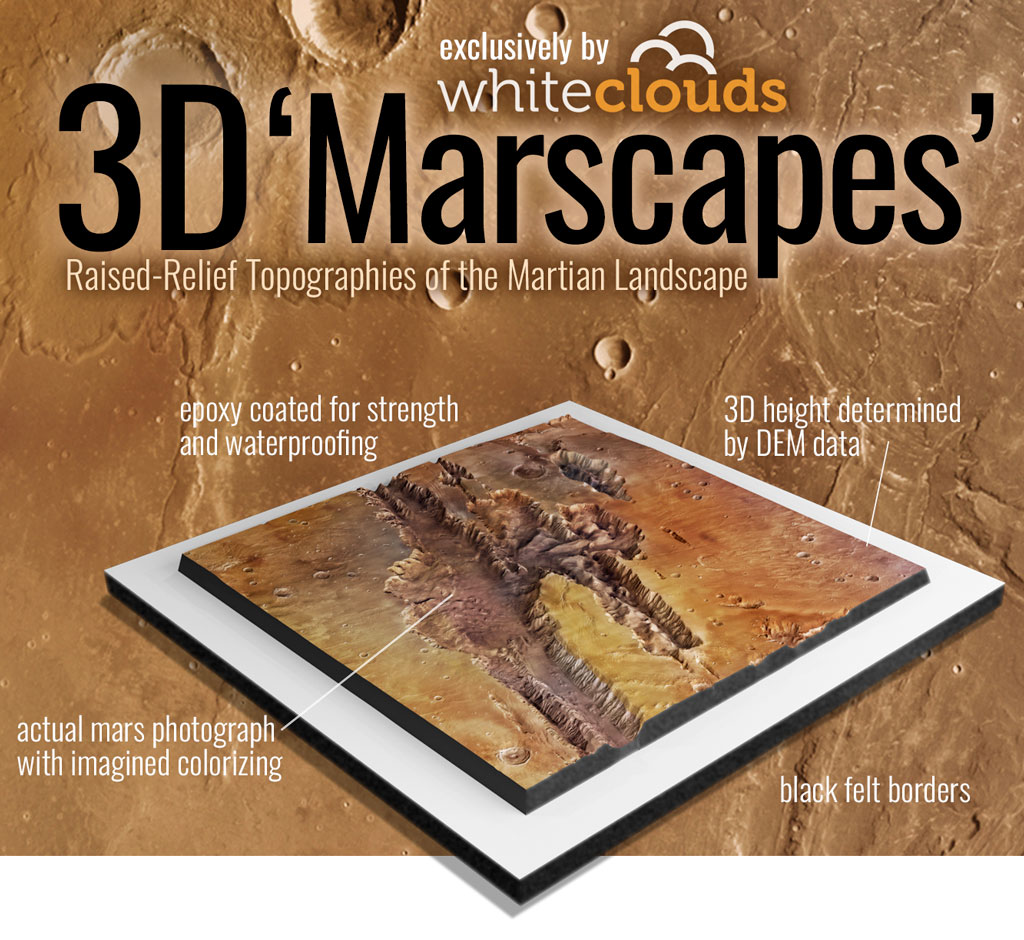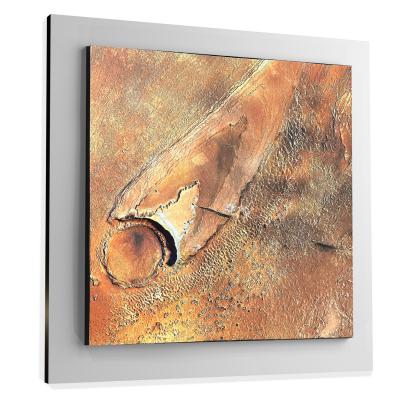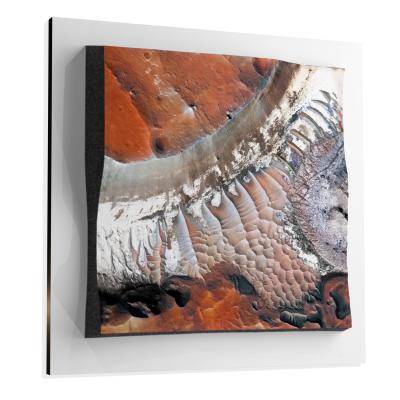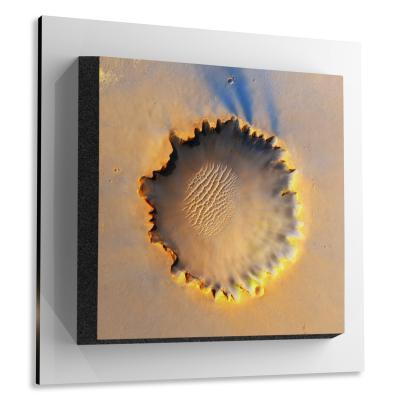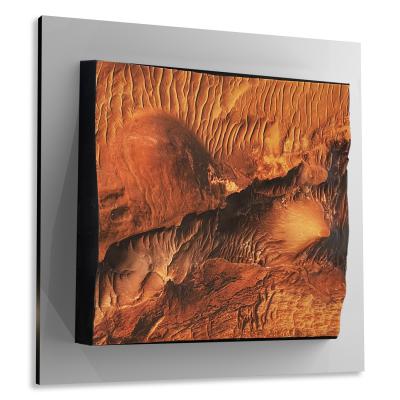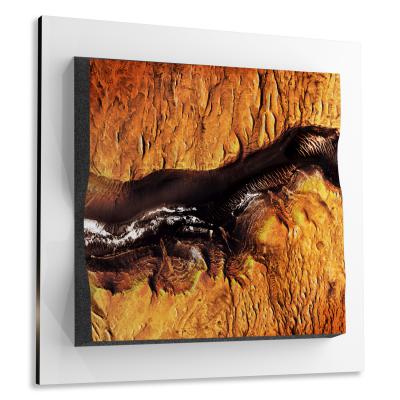Kaiser Crater
Kaiser Crater
We Build Custom 8K Mars Canvas Prints of Kaiser Crater
Did you know we make
custom
8K Mars Canvas Prints

and
3D Marscapes

Kaiser Crater
Kaiser Crater is a significant geological formation on the surface of Mars that has attracted considerable attention from researchers in planetary science. Named after Frederik Kaiser, a Dutch astronomer, the crater has become a focal point for understanding various aspects of Mars’ geology, geomorphology, and potentially its astrobiology. This report covers the key characteristics of Kaiser Crater, examining its geographical location, geological composition, significant discoveries, scientific missions that have explored it, and its intriguing geomorphological features.
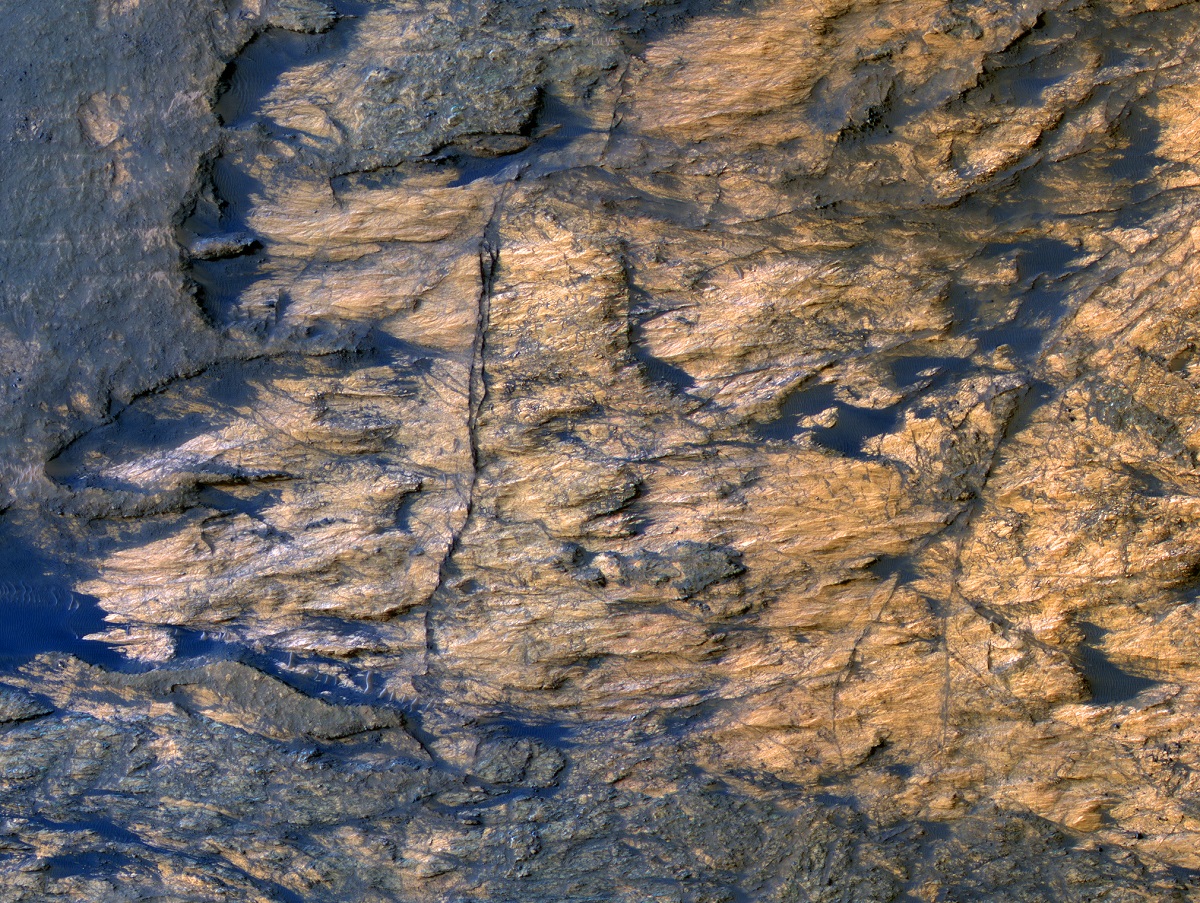 Bedrock Outcrops in Kaiser Crater
Bedrock Outcrops in Kaiser Crater
Geographical Location
Kaiser Crater is prominently located in the Noachis Terra region of the southern hemisphere of Mars, a terrain believed to be one of the planet’s oldest surfaces, dating back to the Noachian period. This ancient region is filled with a mosaic of geological features, giving Kaiser Crater a contextual richness. The crater’s geographical coordinates pinpoint it at roughly 47 degrees South latitude and 19 degrees West longitude. Spanning an impressive area with a diameter of around 207 kilometers, Kaiser Crater stands out as one of the more expansive impact craters in the Martian landscape. Its sheer size means it captures a variety of geological and geomorphological phenomena within its boundaries. It is enveloped by a complex topography that includes other notable geological formations like valleys, smaller satellite craters, and even towering mountain ranges. Kaiser Crater serves as a hub within an intricate network of craters and other geological features, offering scientists a rich tapestry of material to study. This broad spectrum of neighboring features influences Kaiser Crater in complex ways, contributing to its diverse geological and geomorphological characteristics and making it an invaluable resource for digging deeper into Mars’ long and complicated geological history.
Advertisement
Sample Marscapes
Geological Composition
Kaiser Crater is a rich geological archive, capturing a multi-faceted narrative of Mars’ extensive geological history. Sophisticated spectroscopic analyses conducted primarily by orbiters have unveiled a mineralogical smorgasbord within the crater, including an array of clays and sulfates. These minerals are vital clues indicating a range of geological processes that might have occurred, such as aqueous alteration, suggesting the past presence of water. The crater’s floor is particularly captivating as it is replete with layers of sedimentary rocks, a feature that speaks volumes about the environmental conditions that existed at the time of their deposition. These layered formations could be the result of various processes, ranging from aeolian (wind-based) to fluvial (water-based) activities, or even a complex interplay between the two. Meanwhile, the towering walls of the crater present their own geological puzzles. Composed of an amalgamation of rock types, including basalts, they bear the scars of erosion, offering a living testament to the erosive powers that have shaped them over eons. Together, the floor and walls serve as chapters in a geologic tale that covers billions of years, from periods of volcanic activity to impact events and beyond.
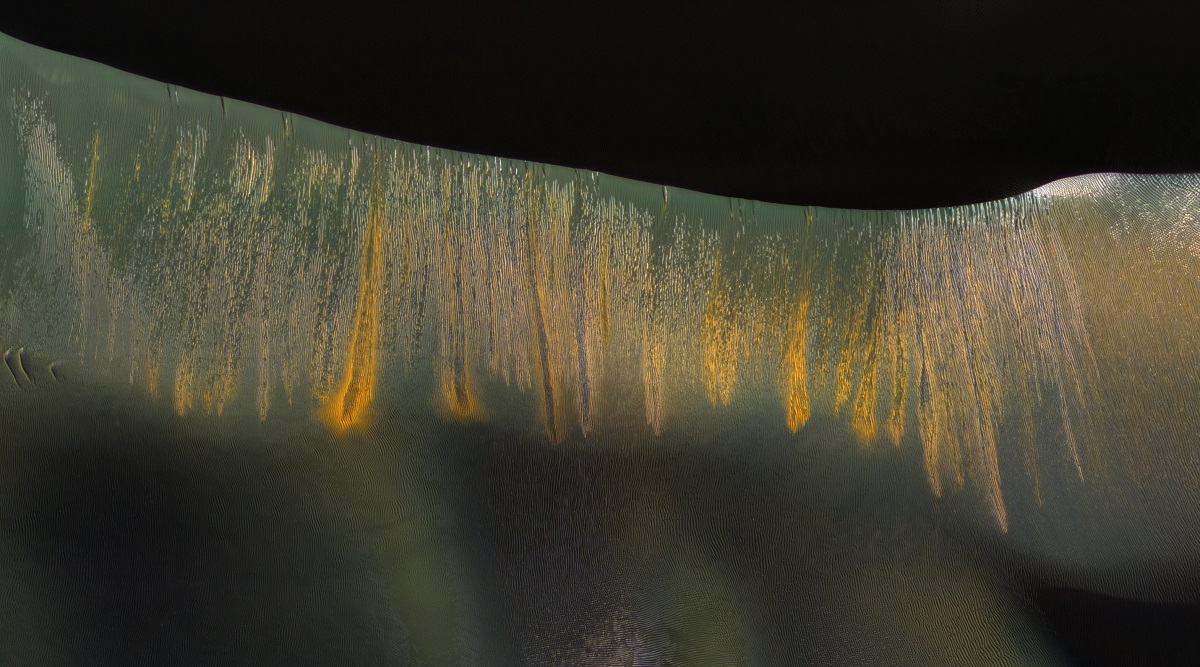 Glowing Gullies in Kaiser Crater Dunes
Glowing Gullies in Kaiser Crater Dunes
Significant Discoveries
Evidence of Water
One of the more thrilling discoveries in Kaiser Crater has been the strong evidence pointing to a history of water activity. The identification of water-associated minerals like sulfates and clays suggests that this sprawling crater may have once been the site of an aqueous environment. This could have been in the form of a standing lake or perhaps a groundwater system, indicating a more dynamic and potentially habitable past for Mars.
Layered Deposits
Another intriguing discovery has been the existence of intricately layered sedimentary deposits within the crater. These layers can serve as a sort of historical ledger, potentially detailing the climatic conditions and sedimentation processes—whether driven by wind or water—that were at play at different times in Martian history.
Impact Processes
Kaiser Crater is a textbook example for the study of impact processes. Its sheer size and complex internal features like central peaks and terraced walls provide researchers with an open-air laboratory for understanding the dynamics and mechanics of impact cratering, adding another layer to its scientific importance.
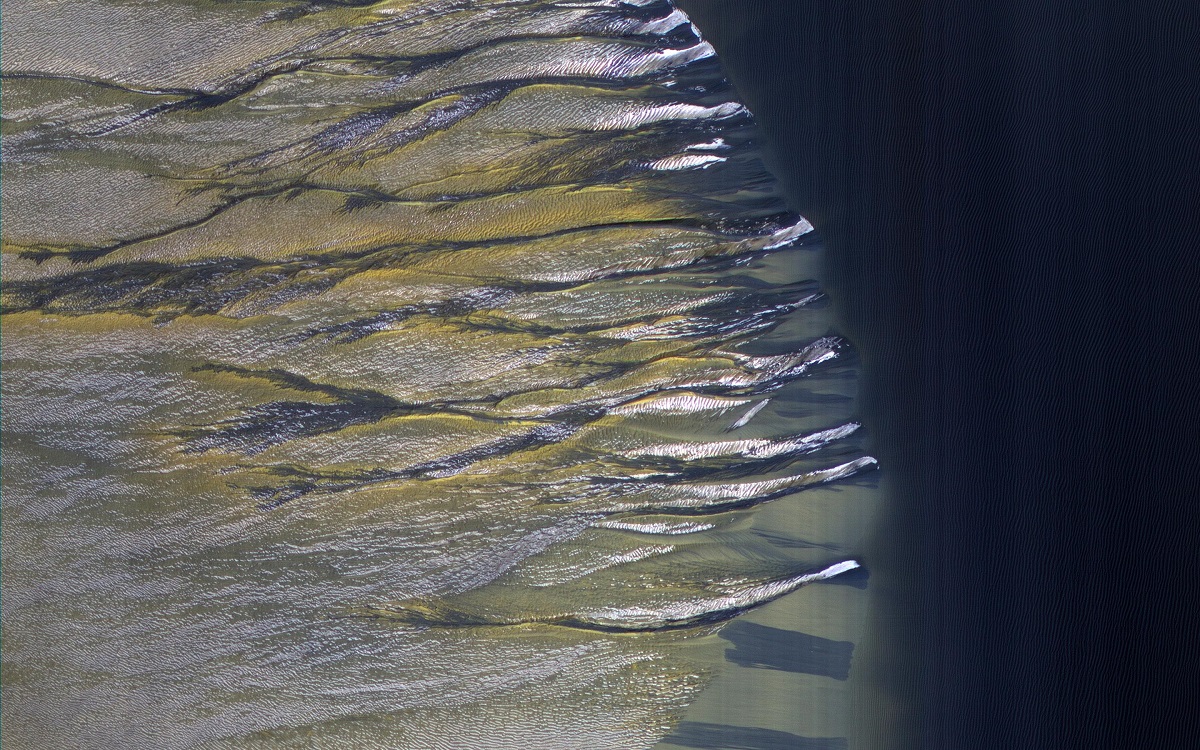 Defrosting Dunes in Kaiser Crater
Defrosting Dunes in Kaiser Crater
Scientific Missions
Mars Reconnaissance Orbiter (MRO)
The Mars Reconnaissance Orbiter has been instrumental in our evolving understanding of Kaiser Crater. With its high-resolution cameras and sophisticated spectroscopic equipment, MRO has provided unparalleled data, unraveling the crater’s mineral composition, geological structures, and even its geomorphological intricacies.
Viking Orbiters
Long before MRO, the Viking missions of the late 1970s delivered some of the first high-resolution images of Kaiser Crater. These early missions laid the foundation for all subsequent studies, offering the first tantalizing glimpses into this intriguing Martian feature.
Future Missions
Kaiser Crater remains high on the list of potential targets for future exploration missions. Its intriguing geological and geomorphological features make it a tantalizing prospect for missions aimed at further dissecting the geological, climatic, and even astrobiological history of Mars.
Geomorphological Features
Kaiser Crater is an extravagant exhibition of geomorphological phenomena that not only delve into the history of the crater itself but also offer a window into broader Martian geology and climatology. One of the most striking features of this complex crater is its central peak—a feature commonly found in large impact craters—which can provide invaluable information about the subsurface composition and structure of the impacted area. The crater’s walls are terraced, a feature indicative of erosional processes that could have been caused by wind or even past water activity. These terraces serve as natural archives, documenting the erosional history of the area. On the crater floor, the geomorphology is far from simple. It is adorned with features like dune fields and layered sedimentary deposits, each of which provides distinct opportunities to study sediment transport mechanisms, whether they are driven by current wind patterns or harken back to an era of liquid water.
Kaiser Crater is not just another impact feature on the Martian landscape; it is a complex geological and geomorphological system that offers a window into Mars’ past. From its rich mineralogical composition to its diverse range of geomorphological features and evidence of past water activity, Kaiser Crater stands as a monumental archive of Martian history waiting to be fully deciphered. As we continue to direct scientific missions to this intriguing feature, we can expect to deepen our understanding of not just Kaiser Crater but of Mars as a whole.
Check out our 3D Mars Learning Center for more information on Mars and Kaiser Crater. You can also learn more at: NASA Mars Exploration.
More About Mars
Contact us today to learn more about our 3D services and how we can help you achieve your goals.
